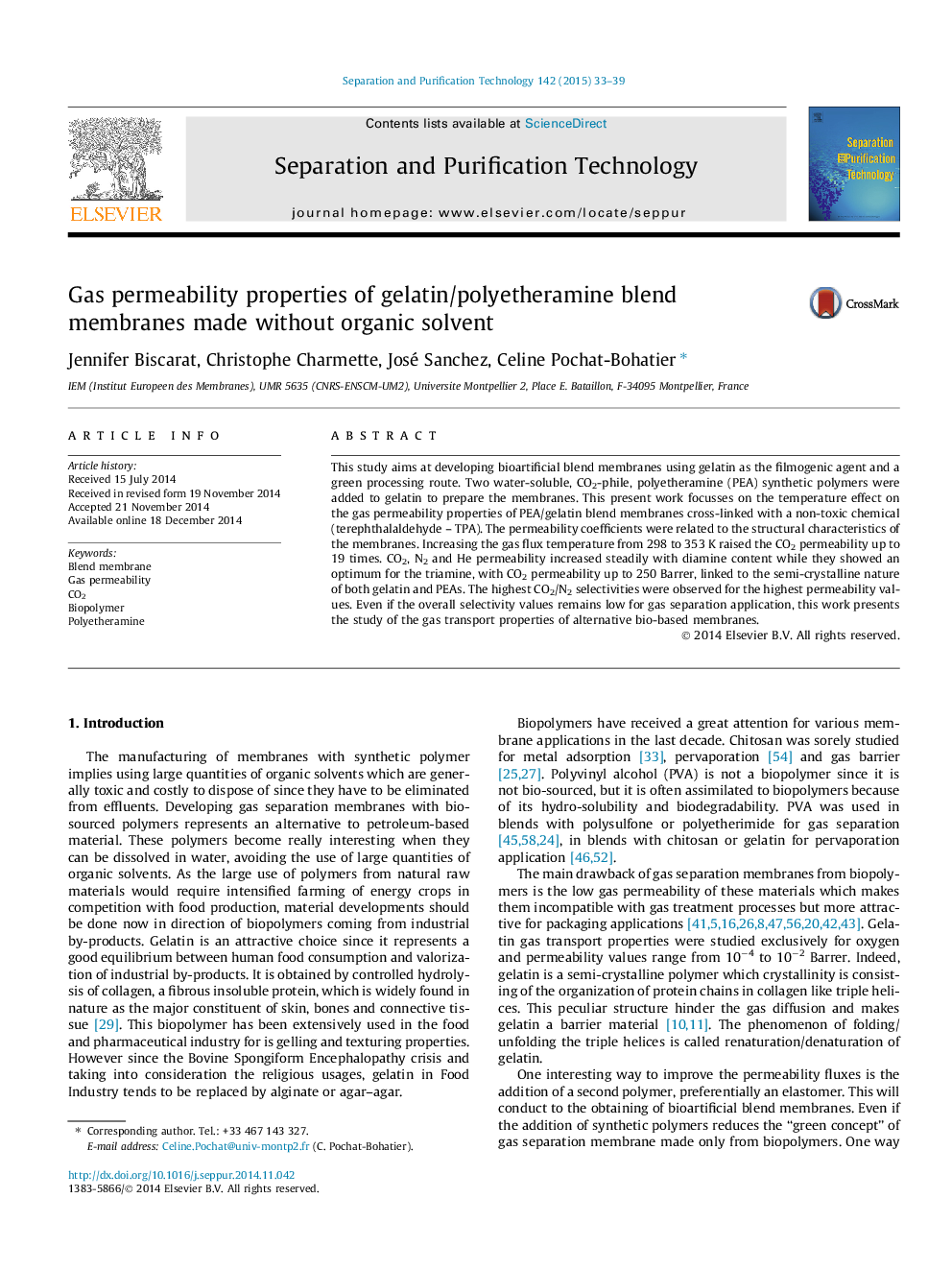| Article ID | Journal | Published Year | Pages | File Type |
|---|---|---|---|---|
| 640790 | Separation and Purification Technology | 2015 | 7 Pages |
•Crosslinked polyetheramine/gelatin blend membranes prepared without organic solvent.•Influence of temperature on He, CO2 and N2 gas membrane permeability coefficients.•The CO2 permeability was raised up to 250 Barrer.•Relation between gas permeability, crystallinity and gelatin triple helical content.
This study aims at developing bioartificial blend membranes using gelatin as the filmogenic agent and a green processing route. Two water-soluble, CO2-phile, polyetheramine (PEA) synthetic polymers were added to gelatin to prepare the membranes. This present work focusses on the temperature effect on the gas permeability properties of PEA/gelatin blend membranes cross-linked with a non-toxic chemical (terephthalaldehyde – TPA). The permeability coefficients were related to the structural characteristics of the membranes. Increasing the gas flux temperature from 298 to 353 K raised the CO2 permeability up to 19 times. CO2, N2 and He permeability increased steadily with diamine content while they showed an optimum for the triamine, with CO2 permeability up to 250 Barrer, linked to the semi-crystalline nature of both gelatin and PEAs. The highest CO2/N2 selectivities were observed for the highest permeability values. Even if the overall selectivity values remains low for gas separation application, this work presents the study of the gas transport properties of alternative bio-based membranes.
Graphical abstractFigure optionsDownload full-size imageDownload as PowerPoint slide
